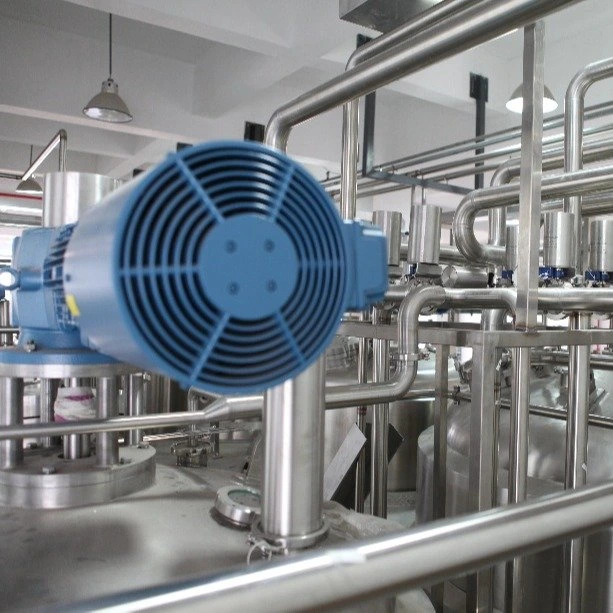With the need for increased visibility of a company’s assets comes the need for an asset tracking and monitoring system that provides such visibility. In industrial workplaces, asset tracking promotes workplace productivity and protects against loss, ultimately providing an immediate ROI. Among the top connectivity solutions for industrial asset tracking are Bluetooth Low Energy (LE) and Xtreme Low Energy (XLE®). Due to their ability to conserve energy while still processing enough data to accurately identify asset location, they have both become recognized as leading options. Let’s dive into three ways Bluetooth LE and XLE® technologies work for industrial asset tracking.
1. Energy Saving
Bluetooth LE and XLE® technologies are much more energy efficient than GPS, satellite, or UWB asset tracking connectivity options. Here’s how.
Bluetooth LE
The ultra-low power consumption of Bluetooth LE makes it ideal for connected and wearable devices, such as asset tracking tags. Its efficiency keeps battery size down, which reduces device cost, size, and weight. Link Labs AirFinder OnSite asset tags powered by Bluetooth LE remain in sleep mode until the asset tracking software initiates a connection. Instead of a tag that constantly sends the IoT platform real time location data, the asset tags only sends information when necessary, allowing the technology to conserve battery life more than competing solutions. With AirFinder Bluetooth LE tags, asset location data can be sent on a schedule or sent manually by the user of the IoT platform.
XLE®
Hence the name Xtreme Low Energy, XLE® has even more energy-saving capability than Bluetooth LE, while still using similar IoT technology. XLE® uses phase-range technology to calculate a tagged asset’s location. Using XYZ coordinates, it can more accurately determine the location while conserving energy with less back and forth transactions. There is less overhead communication, making it faster and more streamlined.
Another advantage of both the Bluetooth LE and XLE® solutions used by AirFinder is that the asset tags carry the majority of the workload instead of the location beacons and access points. While the tags transmit location data, the beacons and access points calculate/triangulate position, and report data to the IoT platform. This would normally take a significant amount of power from the tag. However, a “watchdog” program turns off hardware components when they’re not needed or being used, and the tag only listens for beacon signals when told.
Tags powered by Bluetooth LE can last from 3-5 years, whereas XLE® tags using the same form factor last 5-7 years, depending on the amount of use. For solutions within the manufacturing, healthcare, or supply chain industries, long-lasting tags makes for more efficient operations. The longevity of these two connectivity solutions contribute to the next benefit: affordability.
2. Affordability
Several factors contribute to the affordability of asset tracking connectivity solutions. With Bluetooth LE and XLE® technologies, the asset tracking tags cost pennies to the dollar compared to other solutions. In part, this depends on the use case. The more tags a company requires, the lower the cost. Additionally, the energy-saving benefit will reduce the number of times the tags’ batteries need to be replaced, thus driving down costs.
On the other hand, solutions like UWB are several times the cost of comparable asset tracking solutions because of the infrastructure required to make it work and higher tag costs. Additionally, solutions like UWB tend to connect via an external network such as WiFi or cellular service, which is an added cost for the user.
Another factor to consider is the difference between a Real Time Location System (RTLS) and Radiofrequency Identification (RFID) for asset tracking. According to the RFID Journal, active RFID tags can cost around $25. Passive RFID tags can be as low as $0.15 - $1.50, but also require extensive infrastructure and do not track objects in real time.
RTLS tags range from $10 - $15 and provide the added benefit of knowing where assets are in real time. Although RFID and RTLS are related, the key distinction is whether the system is active or passive. RTLS technologies are proactively and constantly reporting their locations in real time. Which brings us to the next point: accuracy.
3. Accuracy
RTLS solutions such as those powered by Bluetooth LE and XLE® use various methods to identify asset location in real time that provide high levels of accuracy, while striking a balance between affordability and energy savings.
Bluetooth LE
BLE technology communicates using location beacons. The more location beacons on site, the better accuracy it will have – this is known as proximity-based location accuracy, or what Link Labs refers to as “Just-Right Precision”. In a location such as a hospital or hotel, this solution can be upscaled or downscaled based on the need to track equipment or personnel. Accuracy is generally +/- one location beacon.
XLE®
XLE® technology uses phase ranging to calculate a tagged asset’s position. Location beacons and access points strategically placed in a desired area emit signals that the tags pick up. The use of xyz coordinates computes the tag’s location with up to meter-level accuracy.
Curious for More Info?
If you’re searching for an asset tracking solution that is energy efficient, affordable, and accurate, look no further than Bluetooth LE and XLE®. For industrial environments needing to track assets indoors, these solutions are ideal in enhancing workplace productivity. If you’d like more information on XLE®, book a demo today and get started.




